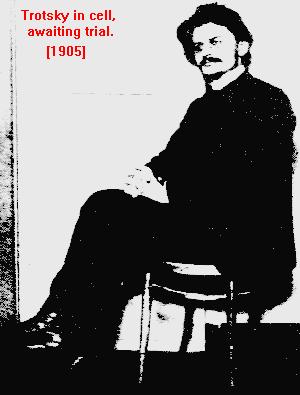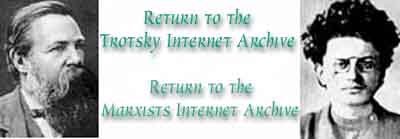
Leon Trotsky
The Permanent Revolution &
Results and Prospects
Transcribed and HTML markup for the Trotsky Internet Archive, a subarchive of the Marxist writers’ Internet Archive, by Sally Ryan in 1996. First publication of Results & Prospects was in St. Petersburg in 1906, shortly after the 1905 first Russian workers’ revolution, lead in large part by Trotsky himself. The first English translation was published by the Communist International in 1921. Permanent Revolution was first published by the Left Opposition in Russian in Berlin in 1930. First English and American editions of Permanent Revolution 1931, re-translated by John G. Wright, for Progress Publishers/Militant Publishing Association.
|
Introduction to the on-line version of
Permanent Revolution and Results & Prospects
Along with the theory of “combined and uneven development”, one of Leon Trotsky’s major contributions to Marxist thought was the theory of “permanent revolution”. The first is the idea that a backward country does not need to pass through the same sequence of stages already achieved by advanced countries. It can combine elements of both backward and advanced countries and leads to the idea of the permanent revolution. The expression “permanent revolution” was borrowed from the Address of the General Council to the Communist League, 1850, by Marx and Engels. Trotsky wrote: “The permanent revolution, in the sense which Marx attached to this concept, means a revolution which makes no compromise with any single form of class rule, which does not stop at the democratic stage, which goes over to socialist measures and to war against reaction from without; that is, a revolution whose every successive stage is rooted in the preceding one and which can end only in complete liquidation.”
The theory of permanent revolution was first formulated in the wake of the 1905 Russian Revolution as an attempt to explain what class would need to lead the coming revolution in Russia. Trotsky agreed with the other Russian Marxists that it would have to initially be bourgeois-democratic in character in order to accomplish such tasks as the overthrow of the Tsarist regime and the transformation of agrarian relations. In Results and Prospects, Trotsky took this idea a step further and analyzed how the conditions unique to Russia meant the working-class would need to join the peasantry to overthrow the capitalist class. Trotsky outlined the theory of permanent revolution from his cell while awaiting trial for his participation in the Petersburg Soviet of 1905. Some 24 years later, The Permanent Revolution (1929) was written in response to an attack on the the theory by Karl Radek, a Soviet journalist and former Left Opposition member who advocated Stalin’s theory of “socialism in one country”. It’s purpose was to clarify the relationship between Trotsky’s and Lenin’s perspectives on class relationships and objectives of the Russian revolution in the international arena.
Succinctly, Trotsky wrote: “The Perspective of permanent revolution may be summarized in the following way: the complete victory of the democratic revolution in Russia is conceivable only in the form of the dictatorship of the proletariat, leaning on the peasantry. The dictatorship of the proletariat, which would inevitably place on the order of the day not only democratic but socialistic tasks as well, would at the same time give a powerful impetus to the international socialist revolution. Only the victory of the proletariat in the West could protect Russia from bourgeois resoration and assure it the possibility of rounding out the establishment of socialism.” – Sally Ryan
Table of Contents

Last updated on: 15.4.2007

